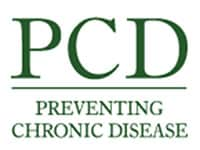This transcript has been edited for clarity.
I'm Dr Neil Skolnik, and today I will talk about a 2023 American Heart Association Scientific Statement on the cardiopulmonary impact of electronic cigarettes and vaping.
This snuck up on us. The FDA tried to keep vaping products out of the United States, based on the rationale that they are a drug delivery device. That was brought to litigation by the companies that make vaping products, and the FDA lost in court in 2010.
Since that time, vaping use among high school students increased from approximately 1% of students in 2011 to the current 10%-20% over the past 4 years. The prevalence of vaping nicotine products has eclipsed cigarette use among youth. (The current use of cigarettes is about 2% among high school students.)
Vaping basics. I'm using the term to encompass both e-cigarettes and vaping products. The term used in the scientific literature is ENDS, which stands for electronic nicotine delivery systems. In these systems, a heating coil vaporizes the fluid that has been put in the device. The fluid often includes a vehicle of propylene glycol and glycerol, as well as nicotine. Flavorings — fruit, menthol, mint, candy, and dessert flavors — are common additives. Tetrahydrocannabinol can, and often is, added to the liquid. The aerosolized vapor, formed by contact of the liquid with the heating coil, is then inhaled. Click to learn more about ENDS.
Physical effects of vaping. The constituents of the fluids used in e-cigarettes have individual as well as combined effects.
Nicotine binds to nicotinic receptors and its effects are sympathomimetic-increasing heart rate, contractility, workload and blood pressure, which theoretically over time can lead to cardiac remodeling, heart failure, and an increased susceptibility to arrythmias.
Propylene glycol and glycerol have emerging evidence of direct cardiopulmonary effects in some people, including wheezing, dry cough, and throat irritation.
The flavorings have various effects. Sweeteners, when aerosolized, generate reactive aldehydes which are thought to be the main contributors to cigarette-induced cardiovascular disease and COPD. Other flavorings can damage DNA in vascular and lung tissue.
Nickel and chromium released from the heating element are also inhaled with the aerosol. They have been shown in rat models to cause pneumonitis and pulmonary inflammation. Nickel is believed to be a carcinogen.
Both nicotine-containing and non–nicotine-containing products can increase platelet activation, reactivity, and aggregation; vascular stiffness; and reactive oxygen species, as well as decrease brain glucose utilization.
People who vape are more likely to develop chronic cough, higher phlegm production, and irritation of the upper airway. Animal studies have suggested that the aerosol can lead to ciliary dysfunction in the airway, and nasal scrapings of people who vape show suppression of immune and inflammatory response genes, suggesting an increased susceptibility to infection.
Some studies show that vaping induces airway obstruction. This effect is likely greater in those with a predisposition to obstructive airway disease. Eosinophilic pneumonitis, hypersensitivity pneumonia, and interstitial lung disease have been reported.
In addition to the common adverse effects, vaping has been associated with a new clinical entity, e-cigarette– or vaping-associated lung injury (EVALI). Through 2020 there were 2807 hospitalizations and 68 deaths from EVALI. Patients present with general symptoms such as fatigue and fever and prominent gastrointestinal symptoms, and respiratory distress is an important component. Chest x-ray typically shows diffuse symmetric bilateral ground-glass appearance. Half of these cases have required ICU admission.
We are sometimes asked whether vaping can be used for smoking cessation. While it is not FDA approved for this purpose, the statement cites a recent Cochrane analysis showing that nicotine-containing vaping products were about 50% more effective than nicotine replacement therapy.
Long-term effects. Most of the known adverse effects are short term because e-cigarettes have not been around long enough to ascertain the long-term effects.
Until such data are available, animal models serve as the best available surrogates for the question of whether vaping increases long-term risk. Those animal models show that vaping increases oxidative stress, inflammation, and DNA damage which suggest that vaping may increase the risk for COPD and lung cancer. The scientific statement concludes that the presence of these acute effects "suggests that electronic nicotine delivery system use is not benign and raises the possibility that adverse impacts can accumulate over time." In addition, the scientific statement notes that the physiologic effects of vaping are similar to findings shown in the early stages of cigarette smoking.
My summary: Vaping is not a good idea. The nicotine in the products makes it addictive and there are demonstrated short-term side effects that range from mild to very severe, including ICU-level admission. The likelihood of long-term damage to the lungs, heart, and vascular system is high.
Let me know what you think. What would you tell your child or grandchild about vaping?
Follow Medscape on Facebook, X (formerly known as Twitter), Instagram, and YouTube
Medscape Family Medicine © 2023
Cite this: The Truth About Vaping - Medscape - Dec 11, 2023.










Comments